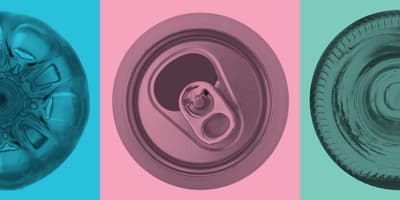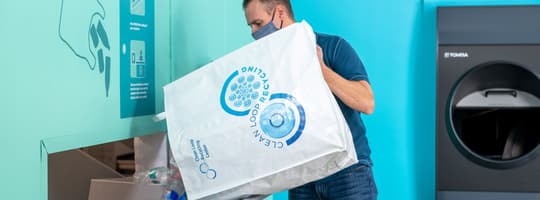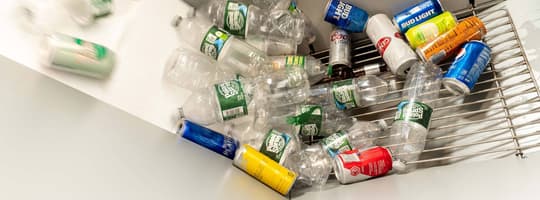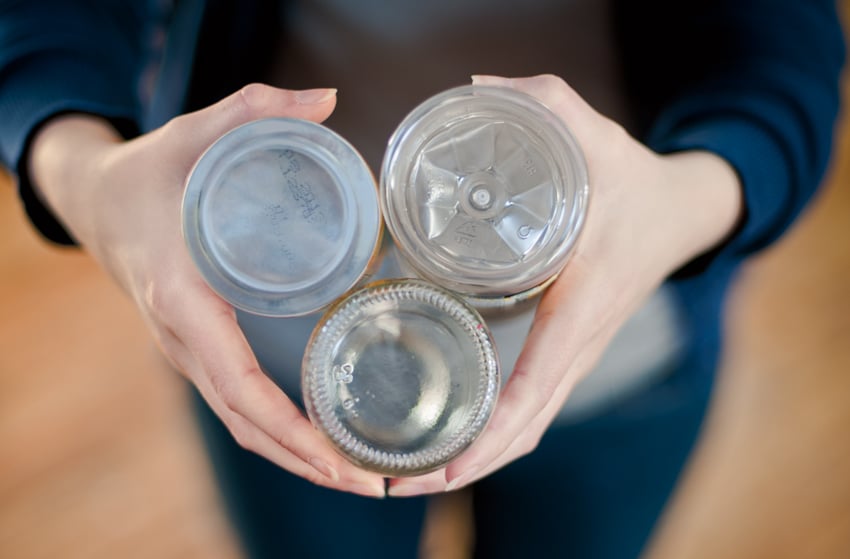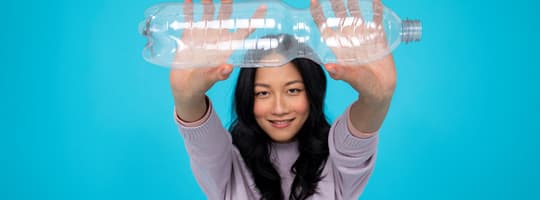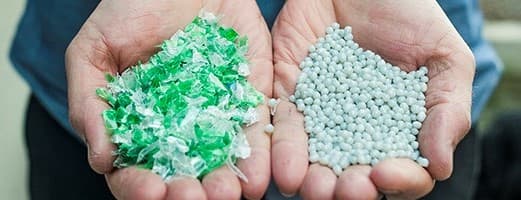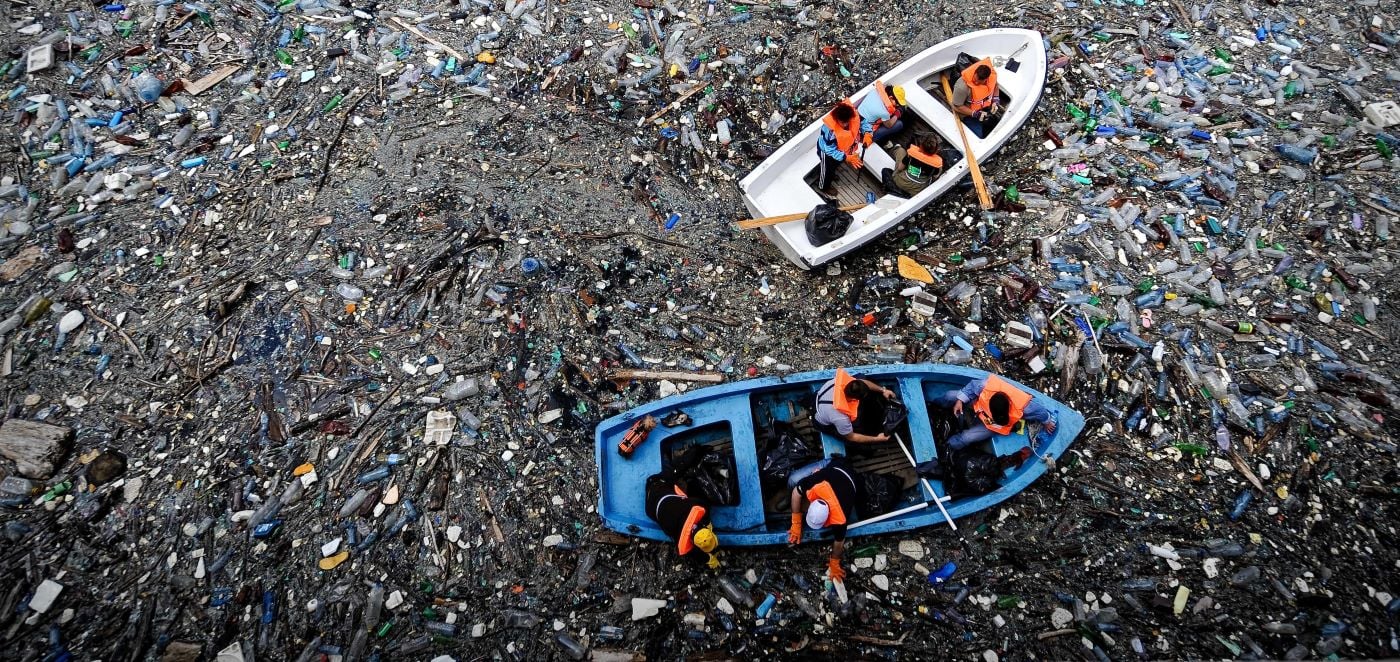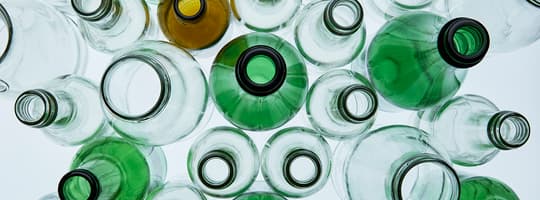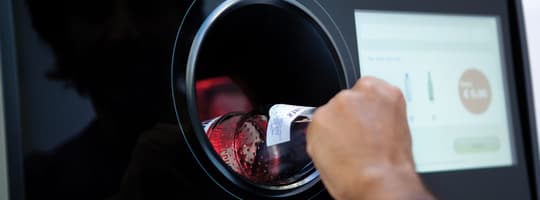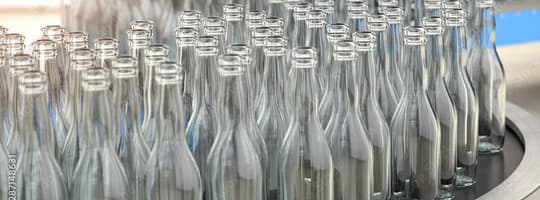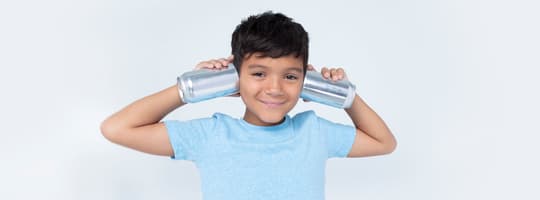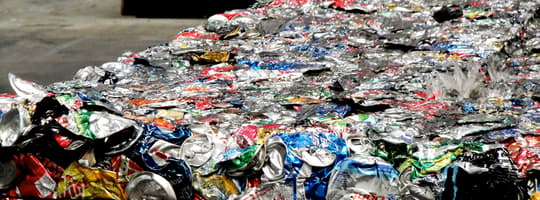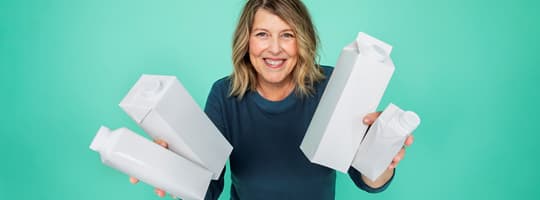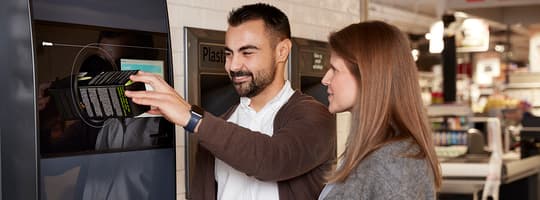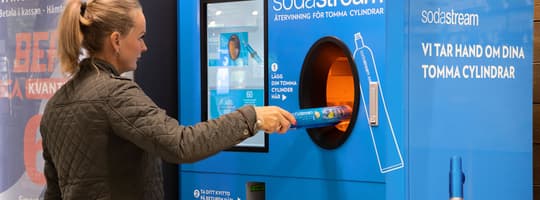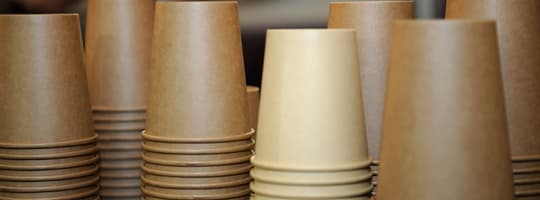Glass production
New glass is produced from sand, soda ash, limestone and other additives for color. While there are no shortages of these materials, extraction and processing consumes natural resources and energy. Recycling glass saves energy and is more economical.
• Permanent material: Glass can be used infinitely, making it especially important to be collected and enter the Clean Loop, where its high quality can be preserved and the material reused. If left in landfill, it would take around one million years to break down.¹³
• Energy savings: Recycling glass uses only 30% of the energy needed to make new glass from raw materials, as crushed recycled glass melts at a lower temperature, extending equipment life. Using 10% recycled glass (cullet) in new glass production reduces CO2 emissions by around 5%.¹⁴
• Reduced cost: 1 kilogram of recycled glass is the equivalent of 1.2 kilograms in raw materials, and can replace up to 95% of the materials needed for production. This causes a cost reduction which, when combined with energy savings, provides a stabilizing effect on the cost of creating glass containers.

